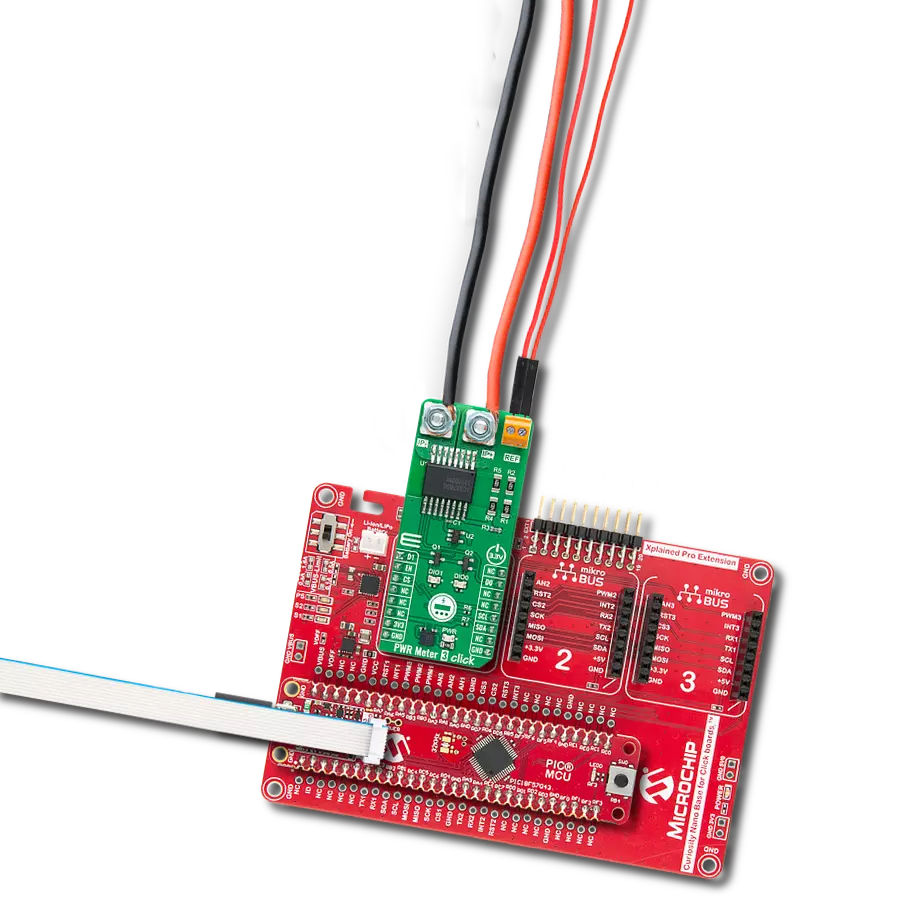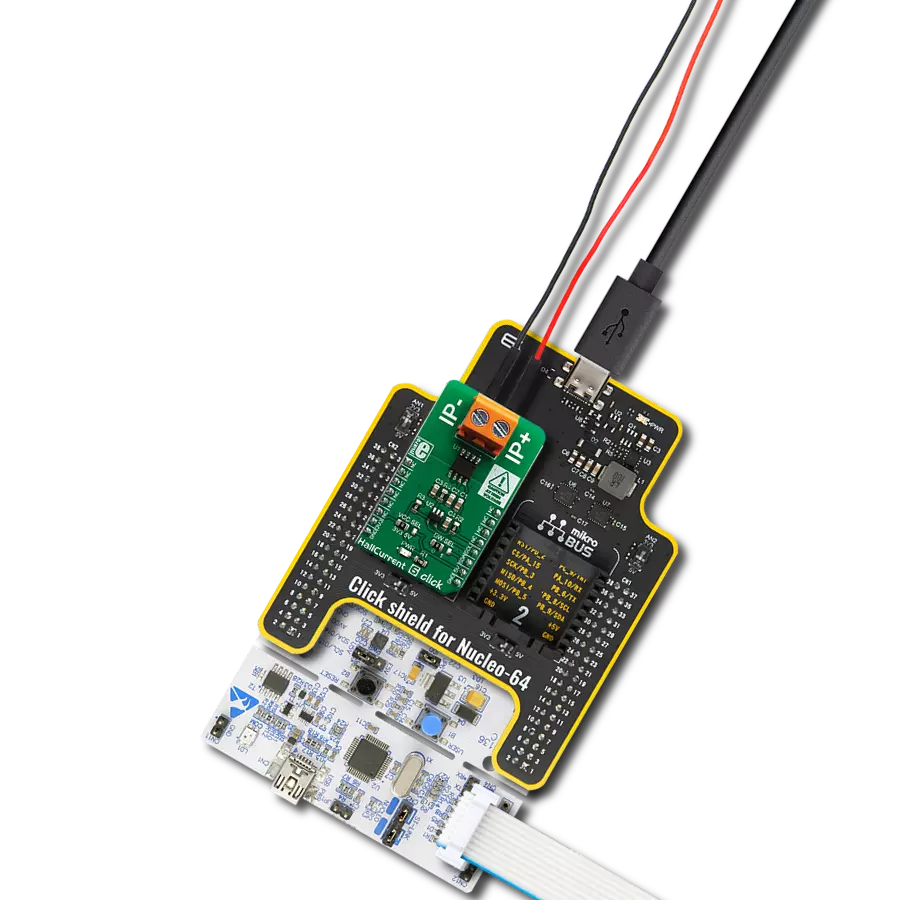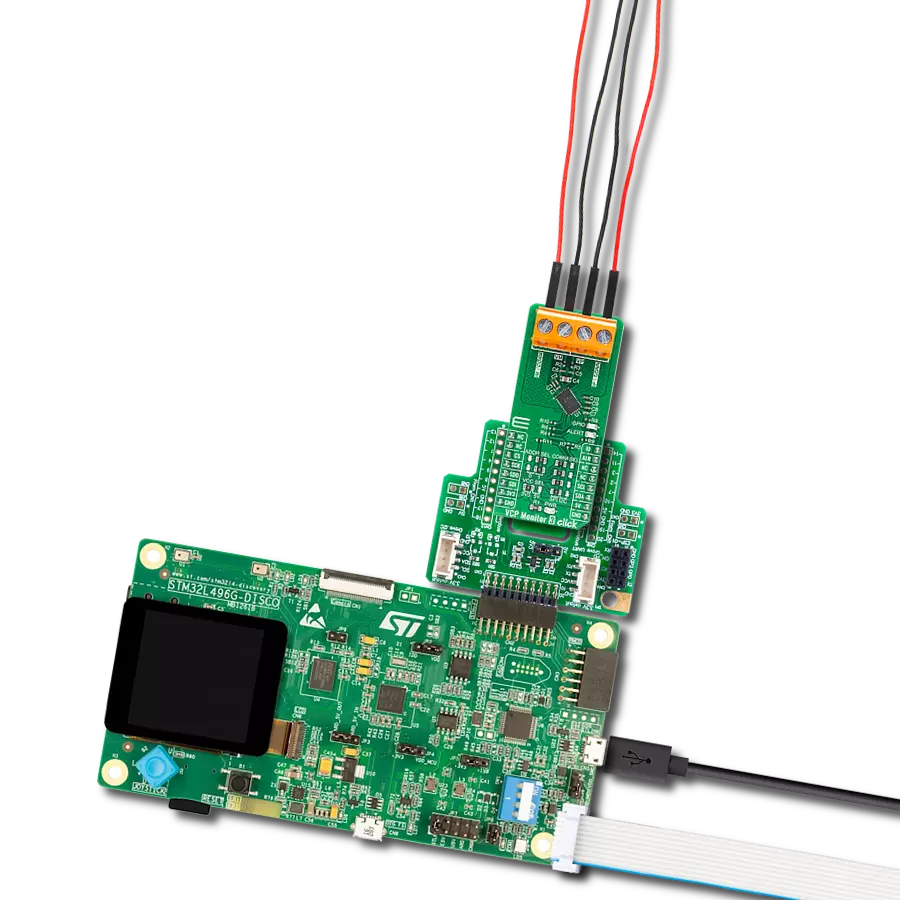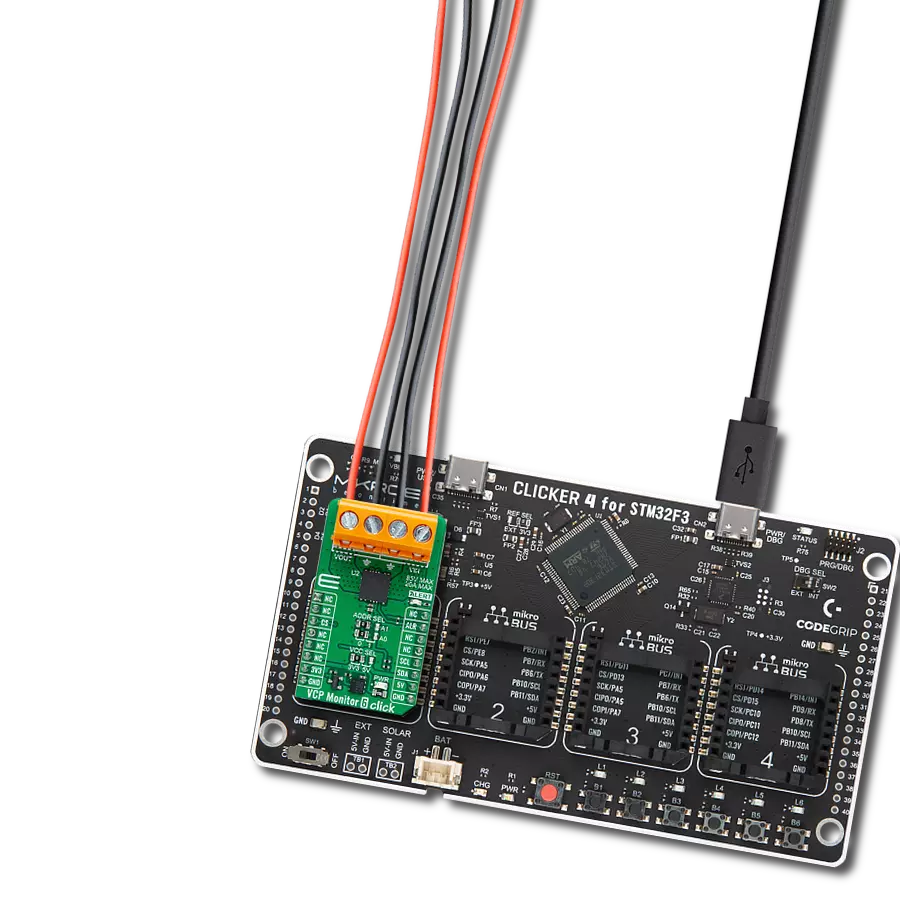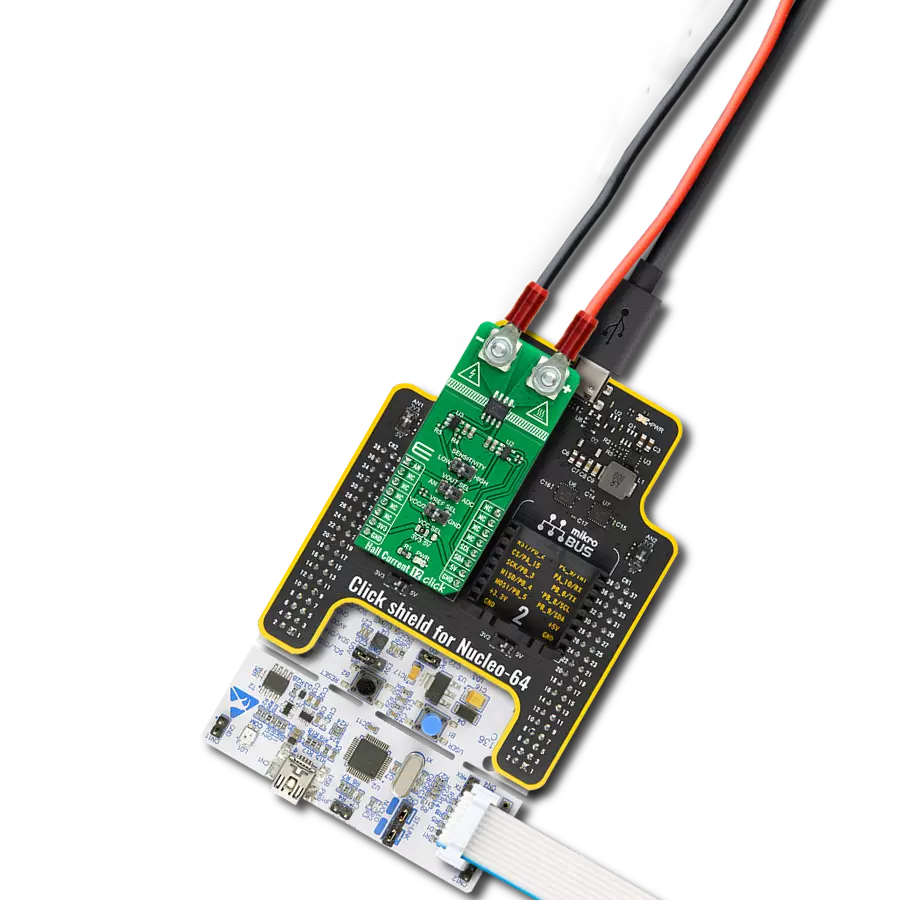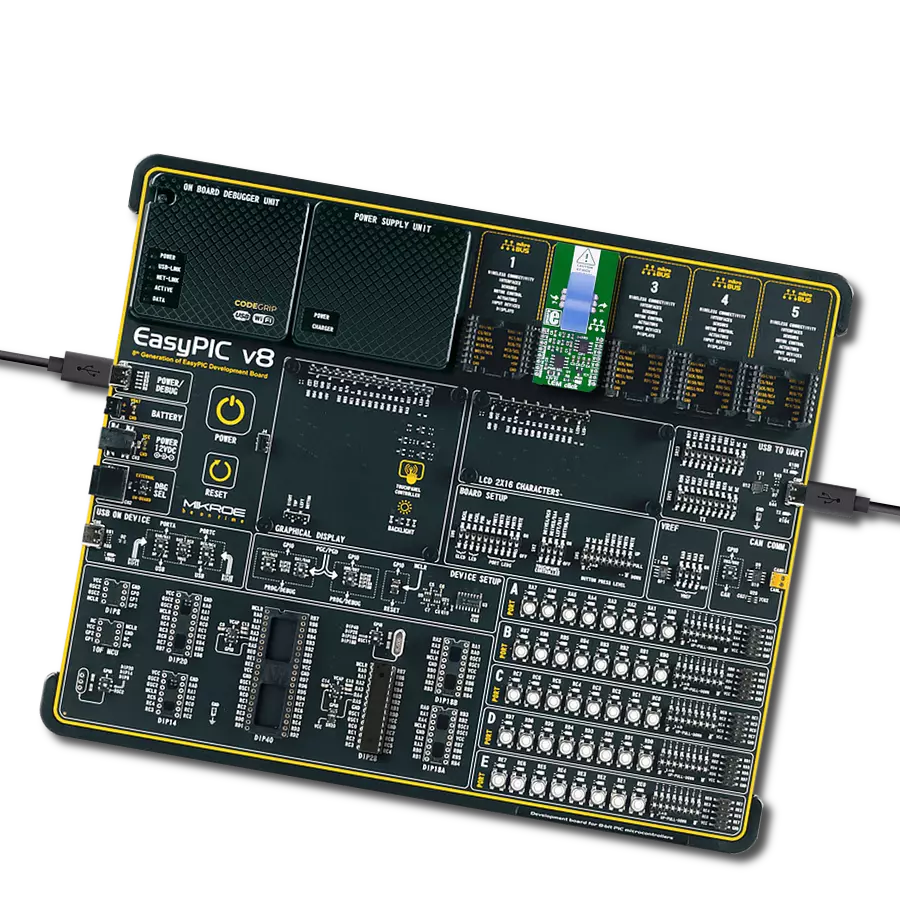Experience a new era of accuracy with our resistor measurement solution, designed to provide real-time data on resistor values for a wide range of applications
A
A
Hardware Overview
How does it work?
R Meter Click is based on the AD8616, a precision 20MHz CMOS rail-to-rail input/output operational amplifier from Analog Devices. This dual-channel amplifier features low offset voltage, wide signal bandwidth, and low input voltage and current noise. The analog output is fed to the MCP3201, a 12-bit AD converter with the SPI serial interface from Microchip. The MCP3201 provides a single pseudo-differential input, features on-chip sample and hold, a maximum sampling rate of up to 100ksps, and more. The MCP3201 gets the reference voltage from the MAX6106, a low-cost, micropower, low-dropout, high-output-current voltage reference from Analog Devices. Since the AD converter has a limited min-max range
of 0-2043, the R Meter Click employs the 74HC4053, a triple 2-channel analog multiplexer/demultiplexer from Nexperia. The multiplexer adjusts the input signal to the amplifier and thus allows the same ADC to measure different scopes of values (0-1K, 1K-100K, 100K-1M). The R Meter Click is a handy tool, but it’s not to be used as a precision instrument. The linearity of the OpAmp impacts the measurement. The R Meter Click uses the 3-Wire SPI serial interface of the MCP3201 to communicate with the host MCU, with a frequency of up to 1.6MHz and supporting SPI 0 and SPI 1 modes. The voltage amplified through the AD8616 can be directly monitored through the AN pin of the mikroBUS™
socket. The supplied firmware (available on Libstock) automatically scans the ADC value and switches the multiplexer output based on the resistor place. The multiplexer interfaces directly with the host MCU through the mikroBUS™ socket over S1, S2, and S3 pins. This Click board™ can be operated only with a 5V logic voltage level. The board must perform appropriate logic voltage level conversion before using MCUs with different logic levels. Also, it comes equipped with a library containing functions and an example code that can be used as a reference for further development.
Features overview
Development board
UNI Clicker is a compact development board designed as a complete solution that brings the flexibility of add-on Click boards™ to your favorite microcontroller, making it a perfect starter kit for implementing your ideas. It supports a wide range of microcontrollers, such as different ARM, PIC32, dsPIC, PIC, and AVR from various vendors like Microchip, ST, NXP, and TI (regardless of their number of pins), four mikroBUS™ sockets for Click board™ connectivity, a USB connector, LED indicators, buttons, a debugger/programmer connector, and two 26-pin headers for interfacing with external electronics. Thanks to innovative manufacturing technology, it allows you to build
gadgets with unique functionalities and features quickly. Each part of the UNI Clicker development kit contains the components necessary for the most efficient operation of the same board. In addition to the possibility of choosing the UNI Clicker programming method, using a third-party programmer or CODEGRIP/mikroProg connected to onboard JTAG/SWD header, the UNI Clicker board also includes a clean and regulated power supply module for the development kit. It provides two ways of board-powering; through the USB Type-C (USB-C) connector, where onboard voltage regulators provide the appropriate voltage levels to each component on the board, or using a Li-Po/Li
Ion battery via an onboard battery connector. All communication methods that mikroBUS™ itself supports are on this board (plus USB HOST/DEVICE), including the well-established mikroBUS™ socket, a standardized socket for the MCU card (SiBRAIN standard), and several user-configurable buttons and LED indicators. UNI Clicker is an integral part of the Mikroe ecosystem, allowing you to create a new application in minutes. Natively supported by Mikroe software tools, it covers many aspects of prototyping thanks to a considerable number of different Click boards™ (over a thousand boards), the number of which is growing every day.
Microcontroller Overview
MCU Card / MCU
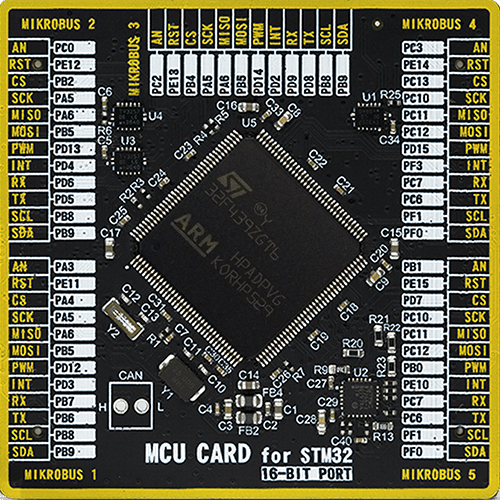
Type
8th Generation
Architecture
ARM Cortex-M4
MCU Memory (KB)
512
Silicon Vendor
STMicroelectronics
Pin count
144
RAM (Bytes)
131072
Used MCU Pins
mikroBUS™ mapper
Take a closer look
Click board™ Schematic

Step by step
Project assembly
Track your results in real time
Application Output
1. Application Output - In Debug mode, the 'Application Output' window enables real-time data monitoring, offering direct insight into execution results. Ensure proper data display by configuring the environment correctly using the provided tutorial.

2. UART Terminal - Use the UART Terminal to monitor data transmission via a USB to UART converter, allowing direct communication between the Click board™ and your development system. Configure the baud rate and other serial settings according to your project's requirements to ensure proper functionality. For step-by-step setup instructions, refer to the provided tutorial.

3. Plot Output - The Plot feature offers a powerful way to visualize real-time sensor data, enabling trend analysis, debugging, and comparison of multiple data points. To set it up correctly, follow the provided tutorial, which includes a step-by-step example of using the Plot feature to display Click board™ readings. To use the Plot feature in your code, use the function: plot(*insert_graph_name*, variable_name);. This is a general format, and it is up to the user to replace 'insert_graph_name' with the actual graph name and 'variable_name' with the parameter to be displayed.

Software Support
Library Description
This library contains API for R Meter Click driver.
Key functions:
rmeter_get_ohms- Get resistance in OHMs functionrmeter_avg_volt- Get average voltage functionrmeter_calc- Calculations function
Open Source
Code example
The complete application code and a ready-to-use project are available through the NECTO Studio Package Manager for direct installation in the NECTO Studio. The application code can also be found on the MIKROE GitHub account.
/*!
* \file
* \brief R Meter Click example
*
* # Description
* Demo app measures and displays resistance of a resistor connected
* to the R Meter Click board.
*
* The demo application is composed of two sections :
*
* ## Application Init
* Initalizes SPI serial communication, LOG module and Click driver.
* Also sets the app callback handler.
*
* ## Application Task
* This is an example that shows the capabilities of the R Meter Click by
* measuring the target resistance.
*
* *note:*
* R Meter Click is a handy tool but it is not to be used as a high precision
* instrument! The linearity of the OP Amplifier impacts the measurement.
* The range of resistance measurement goes from 1 ohm to 1M9 ohms.
*
* \author Nemanja Medakovic
*
*/
#include "board.h"
#include "log.h"
#include "rmeter.h"
static rmeter_t rmeter;
static log_t logger;
void application_callback ( char *message )
{
log_printf( &logger, "- %s\r\n", message );
}
void application_init ( void )
{
log_cfg_t log_cfg;
/**
* Logger initialization.
* Default baud rate: 115200
* Default log level: LOG_LEVEL_DEBUG
* @note If USB_UART_RX and USB_UART_TX
* are defined as HAL_PIN_NC, you will
* need to define them manually for log to work.
* See @b LOG_MAP_USB_UART macro definition for detailed explanation.
*/
LOG_MAP_USB_UART( log_cfg );
log_init( &logger, &log_cfg );
log_info( &logger, "---- Application Init... ----" );
rmeter_cfg_t rmeter_cfg;
// Click initialization.
rmeter_cfg_setup( &rmeter_cfg );
RMETER_MAP_MIKROBUS( rmeter_cfg, MIKROBUS_1 );
if ( rmeter_init( &rmeter, &rmeter_cfg ) == RMETER_INIT_ERROR )
{
log_info( &logger, "---- Application Init Error. ----" );
log_info( &logger, "---- Please, run program again... ----" );
for ( ; ; );
}
rmeter_set_callback_handler( &rmeter, application_callback );
log_info( &logger, "---- Application Init Done. ----\n" );
}
void application_task ( void )
{
uint16_t meas_value = rmeter_auto_scale_range_execution( &rmeter );
float res_value;
if ( rmeter_calculate_resistance( &rmeter, &res_value, meas_value ) == RMETER_OK )
{
log_printf( &logger, " - Resistor value is %.1f ohms\r\n\n", res_value );
}
Delay_ms ( 1000 );
Delay_ms ( 1000 );
Delay_ms ( 1000 );
}
int main ( void )
{
/* Do not remove this line or clock might not be set correctly. */
#ifdef PREINIT_SUPPORTED
preinit();
#endif
application_init( );
for ( ; ; )
{
application_task( );
}
return 0;
}
// ------------------------------------------------------------------------ END























